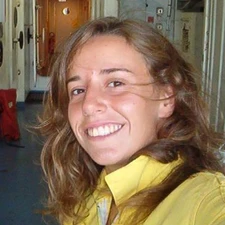Catarina R. Lemos

NH Natural Hazards
The 2014 Outstanding Student Poster (OSP) Award is awarded to Catarina R. Lemos for the poster/PICO entitled:
Tsunami Impact from a 1755-like event in the Aveiro Region, Portugal (Lemos, C. R.; Omira, R.; Pinheiro,L. M.;Baptista, M.A.; Quaresma, L.S.; Garrido,C.)
Catarina Lemos is a PhD student from the Geosciences Department and CESAM, at the University of Aveiro (Portugal). Her research focuses on coastal hazards with the goal of producing tools to support coastal risk management. Among some other hazards (i.e. oil spills and soil liquefaction), Catarina studies the impact of a potential 1755-like tsunami, such as the one generated as a consequence of the “Great Lisbon Earthquake”. The poster presented at EGU 2014 describes the expected flood impact from a 1755-like tsunami in the Aveiro region. This region comprises a coastal shallow water lagoon separated from the sea by a sand barrier, with a single connection, and a large population living close to the shore. Tsunami-flood maps have been produced with up to 5m-resolution showing the results of six scenarios tested using three tidal levels and two seismic source models. Results attest to the importance of the sand barrier in reducing the tsunami wave height at the estuarine side, and model floods in all channels. For the majority of the scenarios, the flooded area with extreme tidal conditions is approximately 100 km2 above mean sea level conditions and a second connection between the Atlantic Ocean and the lagoon is established. Even though differences are seen when including the Tagus Abyssal Plain fault as part of the seismic source model, further investigation is still needed to understand if this can clarify the 1755 earthquake’s source. The current work was performed in collaboration with the Instituto Dom Luiz at the University of Lisbon and the Portuguese Sea and Atmosphere Institute (IPMA), and kindly supported by the Portuguese Science and Technology Foundation (FCT).
